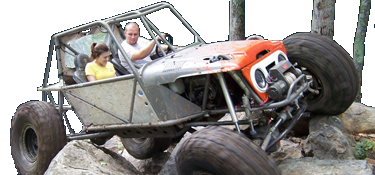In Order Of Performance:
1) 2% REG SoyPower biodiesel
HFRR 221, 415 micron improvement.
50:1 ratio of baseline fuel to 100% biodiesel
66.56 oz. of 100% biodiesel per 26 gallons of diesel fuel
Price: market value
2)Opti-Lube XPD
Multi-purpose + anti-gel
cetane improver, demulsifier
HFRR 317, 319 micron improvement.
256:1 ratio
13 oz/tank
$4.35/tank
3)FPPF RV, Bus, SUV Diesel/Gas fuel treatment
Gas and Diesel
cetane improver, emulsifier
HFRR 439, 197 micron improvement
640:1 ratio
5.2 oz/tank
$2.60/tank
4)Opti-Lube Summer Blend
Multi-purpose
demulsifier
HFRR 447, 189 micron improvement
3000:1 ratio
1.11 oz/tank
$0.68/tank
5)Opti-Lube Winter Blend
Muti-purpose + anti-gel
cetane improver
HFRR 461, 175 micron improvement
512:1 ratio
6.5 oz/tank
$3.65/tank
6)Schaeffer Diesel Treat 2000
Multi-purpose + anti-gel
cetane improver, emulsifier, bio-diesel compatible
HFRR 470, 166 micron improvement
1000:1 ratio
3.32 oz/tank
$1.87/tank
7)Super Tech Outboard 2-cycle TC-W3 engine oil
Unconventional (Not ULSD compliant, may damage 2007 or newer systems)
HFRR 474, 162 micron improvement
200:1 ratio
16.64 oz/tank
$1.09/tank
8)Stanadyne Lubricity Formula
Lubricity Only
demulsifier, 5% bio-diesel compatible, alcohol free
HFRR 479, 157 micron improvement
1000:1 ratio
3.32 oz/tank
$1.00/tank
9)Amsoil Diesel Concentrate
Multi-purpose
demulsifier, bio-diesel compatible, alcohol free
HFRR 488, 148 micron improvement
640:1 ratio
5.2 oz/tank
$2.16/tank
10)Power Service Diesel Kleen + Cetane Boost
Multi-purpose
Cetane improver, bio-diesel compatible, alcohol free
HFRR 575, 61 micron improvement
400:1 ratio
8.32 oz/tank
$1.58/tank
11)Howe’s Meaner Power Kleaner
Multi-purpose
Alcohol free
HFRR 586, 50 micron improvement
1000:1 ratio
3.32 oz/tank
$1.36/tank
12)Stanadyne Performance Formula
Multi-purpose + anti-gel
cetane improver, demulsifier, 5% bio-diesel compatible, alcohol free
HFRR 603, 33 micron improvement
480:1 ratio
6.9 oz/tank
$4.35/tank
13)Used Motor Oil, Shell Rotella T 15w40, 5,000 miles used.
Unconventional (Not ULSD compliant, may damage systems)
HFRR 634, 2 micron improvement
200:1 ratio
16.64 oz/tank
price: market value
14)Lucas Upper Cylinder Lubricant
Gas or diesel
HFRR 641, 5 microns worse than baseline (statistically insignificant change)
427:1 ratio
7.8 oz/tank
$2.65/tank
15)B1000 Diesel Fuel Conditioner by Milligan Biotech
Multi-purpose, canola oil based additive
HFRR 644, 8 microns worse than baseline (statistically insignificant change)
1000:1 ratio
3.32 oz/tank
$2.67/tank
16)FPPF Lubricity Plus Fuel Power
Multi-purpose + anti-gel
Emulsifier, alcohol free
HFRR 675, 39 microns worse than baseline fuel
1000:1 ratio
3.32 oz/tank
$1.12/tank
17)Marvel Mystery Oil
Gas, oil and Diesel fuel additive (NOT ULSD compliant, may damage 2007 and newer systems)
HFRR 678, 42 microns worse than baseline fuel.
320:1 ratio
10.4 oz/tank
$3.22/tank
18)ValvTect Diesel Guard Heavy Duty/Marine Diesel Fuel Additive
Multi-purpose
Cetane improver, emulsifier, alcohol free
HFRR 696, 60 microns worse than baseline fuel
1000:1 ratio
3.32 oz/tank
$2.38/tank
19)Primrose Power Blend 2003
Multi-purpose
Cetane boost, bio-diesel compatible, emulsifier
HFRR 711, 75 microns worse than baseline
1066:1 ratio
3.12 oz/tank
$1.39/tank
CONCLUSIONS:
Products 1 through 4 were able to improve the unadditized fuel to an HFRR score of 460 or better. This meets the most strict requirements requested by the Engine Manufacturers Association.
Products 1 through 9 were able to improve the unadditized fuel to an HFRR score of 520 or better, meeting the U.S. diesel fuel requirements for maximum wear scar in a commercially available diesel fuel.
Products 16 through 19 were found to cause the fuel/additive blend to perform worse than the baseline fuel. The cause for this is speculative. This is not unprecedented in HFRR testing and can be caused by alcohol or other components in the additives. Further investigation into the possibilities behind these poor results will investigated.
Any additive testing within +/- 20 microns of the baseline fuel could be considered to have no significant change. The repeatability of this test allows for a +/- 20 micron variability to be considered insignificant.
CREDITS:
This study would not have been possible without the participation of all companies involved and dieselplace.com. A special Thank You to all of the dieselplace.com members who generously donated toward this study and waited longer than they should have for the results. You folks are the best. Arlen Spicer, organizer.


